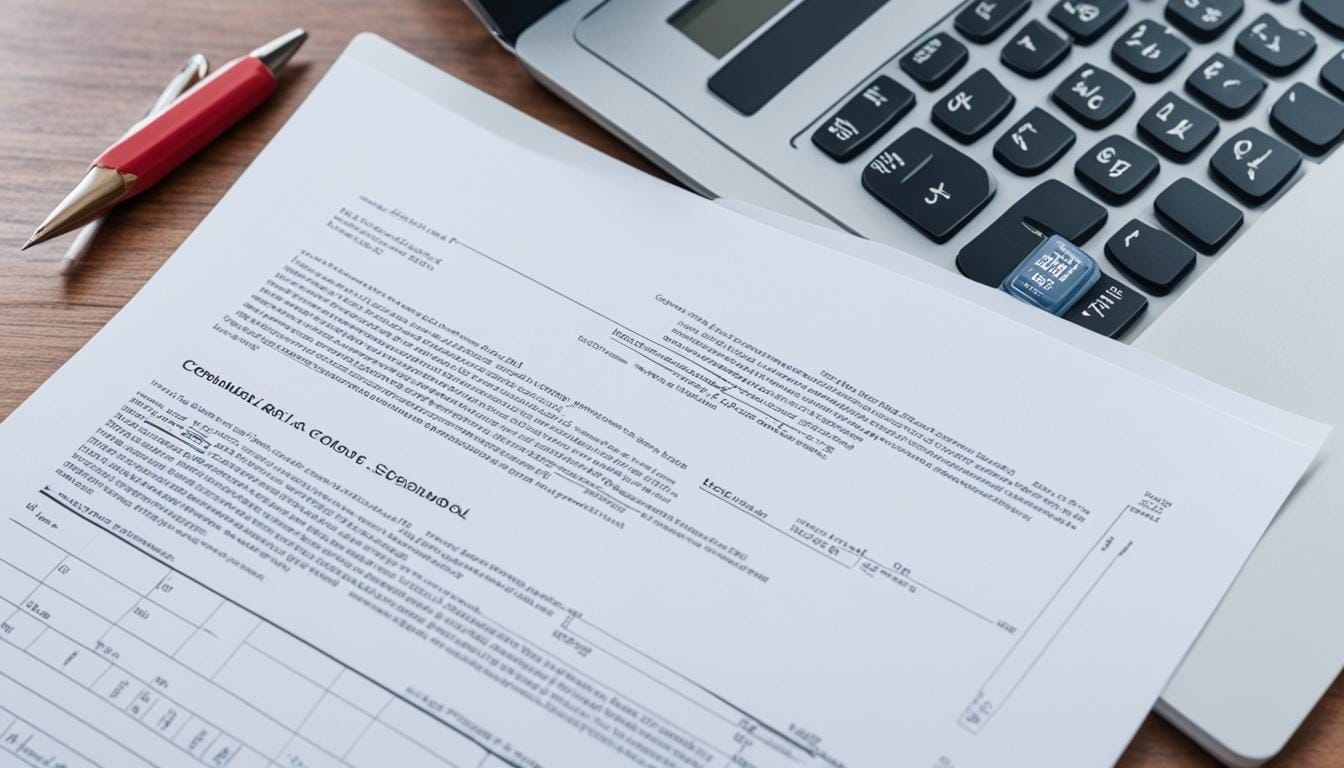Earning a JD degree from an ABA-approved law school is the most straightforward path to becoming a lawyer in the United States. Most JD programs take three years to complete, although part-time programs are becoming more common. You can use LSAC’s Official Guide to search for law schools based on location, keyword, and UGPA/LSAT combination. This guide provides links to each school’s admission requirements, tuition, special programs, and more. Additionally, there may be non-ABA-approved schools in your state, so it’s important to research their bar-admission limitations before enrolling. The LSAC LawHub offers a free personalized report through the LST Wizard from Law School Transparency, which generates a customized list of law schools for you and ranks them according to your priorities.
Key Takeaways:
- Earning a JD degree from an ABA-approved law school is the most straightforward path to becoming a lawyer in the United States.
- LSAC’s Official Guide helps you search for law schools based on location, keyword, and UGPA/LSAT combination.
- The LSAC LawHub offers a free personalized report through the LST Wizard from Law School Transparency.
- Research bar-admission limitations before enrolling in non-ABA-approved schools in your state.
- Make use of the customized list and rankings generated by the LST Wizard to prioritize your law school choices.
Whether you’re aiming for a top-tier law school or considering other options, understanding the law school admissions process is crucial. In this comprehensive guide, we’ll break down how to assess which law school you can get into, utilizing resources and strategies to increase your chances of acceptance.
Using Your UGPA and LSAT Score to Predict Likelihood of Admission to Law School
When considering applying to law school, one of the key factors to assess is your likelihood of admission. This section will explore how you can use your undergraduate GPA (UGPA) and LSAT score to predict your chances of getting into law school. While the UGPA and LSAT score are important considerations for admissions, it’s crucial to remember that law schools also take into account other factors, such as letters of recommendation, work experience, and personal statements.
Fortunately, the Law School Admission Council (LSAC) provides a helpful UGPA/LSAT search tool that can assist you in gauging your chances of admission. This tool, based on the fall 2021 application and admission data from ABA-approved law schools, utilizes a logistic regression model to predict the percentage likelihood of admission based solely on your UGPA and LSAT scores. However, it’s essential to note that these predictions serve as estimates and should be used as a starting point in your research.
While the tool provides a range of schools that align with your UGPA and LSAT score, it’s advisable to dig deeper into each school’s admission requirements. For the most accurate and up-to-date information, visit the Official Guide page for each law school on your list. This will provide you with valuable insights into admission probabilities, tuition, special programs, and more.
Example Table: Law School Acceptance Rates Based on UGPA and LSAT Score
| Law School | Acceptance Rate | Average UGPA | Average LSAT Score |
|---|---|---|---|
| Law School A | 20% | 3.6 | 165 |
| Law School B | 40% | 3.3 | 160 |
| Law School C | 15% | 3.8 | 170 |
| Law School D | 30% | 3.5 | 163 |
| Law School E | 25% | 3.7 | 167 |
Table: A hypothetical table demonstrating the acceptance rates, average UGPA, and average LSAT score for a selection of law schools. Please note that these numbers are for illustrative purposes only and do not reflect the current statistics of specific law schools.
By using the UGPA/LSAT search tool provided by LSAC and conducting thorough research on each law school, you can assess your chances of admission with greater clarity. Remember to consider other factors beyond UGPA and LSAT scores, as they play an essential role in the overall evaluation process. Armed with this information, you can make informed decisions about where to apply and increase your chances of securing a spot in the law school that aligns with your goals.
Law School Admissions Predictor – 7Sage
If you’re wondering about your chances of getting into law school, the Law School Admissions Predictor on 7Sage is a valuable tool to consider. By inputting your highest LSAT score and cumulative undergraduate GPA, you can estimate your admission probabilities based on the month you plan to apply.
It’s important to keep in mind that admissions outcomes are influenced by various factors, including your essays and the specific needs of each law school. While the predictor provides an idea of where you stand, it should not be considered the final word in your application process.
The data used in the predictor is self-reported, which means it may be subject to bias. It’s important to use the predictions as a reference point rather than relying solely on them. Remember that each law school has its own unique admission criteria, and your application will be evaluated holistically beyond just your LSAT score and GPA.
Take the time to thoroughly research each law school you’re interested in. Visit their websites, read about their admission requirements, explore their programs, and consider other important factors such as location and campus culture. By combining the insights from the Law School Admissions Predictor with your own research, you can make more informed decisions about where to apply and increase your chances of acceptance.
| LSAT Score | GPA | Law School Admission Probability |
|---|---|---|
| 170+ | 3.8+ | 80% |
| 160-169 | 3.5-3.7 | 60% |
| 150-159 | 3.0-3.4 | 40% |
| 140-149 | 2.5-2.9 | 20% |
Best Law Schools
The Best Law Schools list provides valuable insights for applicants looking to explore their options and compare different law schools. Compiled based on surveys of 17,000 students and school administrators, this comprehensive list features 168 law schools and covers various aspects such as quality of life, professors, competitiveness, and more.
When choosing a law school, ranking plays an important role in determining its reputation and academic excellence. The Best Law Schools list offers a snapshot of the top-ranked institutions, enabling prospective students to make informed decisions about their future education.
Here is a glimpse of the top 10 law schools from the list:
| Rank | Law School | Location | Acceptance Rate |
|---|---|---|---|
| 1 | Yale University | New Haven, CT | 7.2% |
| 2 | Stanford University | Palo Alto, CA | 9.0% |
| 3 | Harvard University | Cambridge, MA | 9.63% |
| 4 | University of Chicago | Chicago, IL | 18.6% |
| 5 | Columbia University | New York, NY | 7.61% |
| 6 | New York University | New York, NY | 15.0% |
| 7 | University of Pennsylvania (Carey) | Philadelphia, PA | 14.41% |
| 8 | University of Virginia | Charlottesville, VA | 17.9% |
| 9 | University of California, Berkeley (Boalt) | Berkeley, CA | 12.68% |
| 10 | University of Michigan–Ann Arbor | Ann Arbor, MI | 20.8% |
It’s important for applicants to note that while ranking is a significant factor, it’s crucial to consider other factors such as location, curriculum, professors, and overall fit with personal preferences and goals. The Best Law Schools list serves as a starting point in the research process, providing a comprehensive overview for applicants to explore and compare their options.
Choosing a Law School
Choosing the right law school is a crucial decision that can significantly impact your legal education and future career opportunities. With various law schools to choose from, it’s essential to consider multiple factors to find the best fit for your needs and goals. Here are some key aspects to consider when evaluating your options:
Location
The location of a law school can play a significant role in your overall experience. Consider whether you prefer a school in a bustling city or a more serene suburban environment. Think about the convenience of commuting and the potential networking opportunities available in a particular location.
Curriculum
Examine the curriculum offered by each law school you’re considering. Look for programs that align with your areas of interest and career goals. Consider whether the school offers specialized tracks or clinics in your desired field of law.
Quality of Life
The quality of life on campus and in the surrounding area can greatly influence your overall experience. Consider factors such as housing options, social and extracurricular activities, access to amenities, and the overall atmosphere of the law school community.
Professors
The expertise and reputation of the faculty can have a significant impact on your legal education. Research the backgrounds and accomplishments of the professors at each law school you’re considering. Look for faculty members who have practical experience in your areas of interest and who are known for their teaching abilities.
Competitiveness
Law school can be demanding and competitive, so it’s important to consider the overall competitiveness of each institution. Look into class sizes, grading curves, and the level of competitiveness among students to determine whether it aligns with your preferred learning environment.
Research and Admission Requirements
To gain a comprehensive understanding of each law school, research their admission requirements, ranking, and other relevant information. Visit the official websites of the schools you’re considering to access detailed information about their programs, faculty, admission statistics, and more.
By carefully considering these factors and conducting thorough research, you can make an informed decision about the law schools that best align with your goals, preferences, and qualifications.
Your Law Application Strategy
Developing a strong law school application strategy involves careful planning and consideration. By strategically navigating the law school admissions process, you can increase your chances of being accepted into the law school that aligns with your goals and aspirations.
Timing and Deadlines
Knowing when to apply is crucial to your application strategy. Law schools typically have rolling admissions, meaning they review applications as they are received. It’s advisable to submit your application early in the admissions cycle to increase your chances of acceptance. Be aware of the application deadlines for each law school you’re considering and ensure you submit your materials well ahead of those deadlines.
Applying to Multiple Schools
Applying to multiple law schools can improve your chances of acceptance. It’s recommended to apply to a range of schools, including safety schools, target schools, and reach schools. Safety schools are those where your academic credentials and LSAT scores exceed their average accepted student profile. Target schools are where your academic credentials and LSAT scores fall within their average range, indicating a good chance of acceptance. Reach schools are where your academic credentials and LSAT scores are below their average, making acceptance more challenging but not impossible. Applying to a mix of schools increases your likelihood of acceptance.
Consider School Competitiveness
Law schools vary in terms of their competitiveness. Some schools have higher acceptance rates, while others are more selective. Research each law school’s admissions statistics, including acceptance rates and average GPA and LSAT scores of admitted students. Evaluating a school’s competitiveness will help you determine your chances of acceptance and allow you to prioritize your application efforts.
To help you visualize your law school application strategy, here is a table summarizing the key factors to consider:
| Factors | Considerations |
|---|---|
| Timing and Deadlines | Submit your application early and meet all application deadlines. |
| Number of Schools | Apply to a mix of safety, target, and reach schools to improve your chances of acceptance. |
| School Competitiveness | Evaluate each school’s acceptance rates and average GPA and LSAT scores to gauge your chances of acceptance. |
Developing a well-thought-out law school application strategy involves considering timing, the number of schools to apply to, and the competitiveness of each school. By carefully planning your applications, you can maximize your chances of gaining admission to the law school that best fits your aspirations.
Conclusion
Deciding which law school you can get into depends on various factors, including your GPA, LSAT scores, and other application components. To make an informed decision, it’s important to use reliable resources like LSAC’s Official Guide, the Law School Admissions Predictor on 7Sage, and the Best Law Schools list. These tools can help you narrow down your options and find the law school that best fits your goals.
Thoroughly researching each school is crucial. Consider factors such as location, curriculum, professors, and competitiveness. By taking a strategic approach to the law school admissions process, you can unlock your potential and increase your chances of getting accepted into the right law school for you.
Remember, the law school admissions journey is unique for each applicant. It’s important to stay focused, put in the effort, and make use of the available resources. With careful planning and preparation, you can navigate the admissions process successfully and secure a spot in the law school that will help you achieve your career aspirations.













